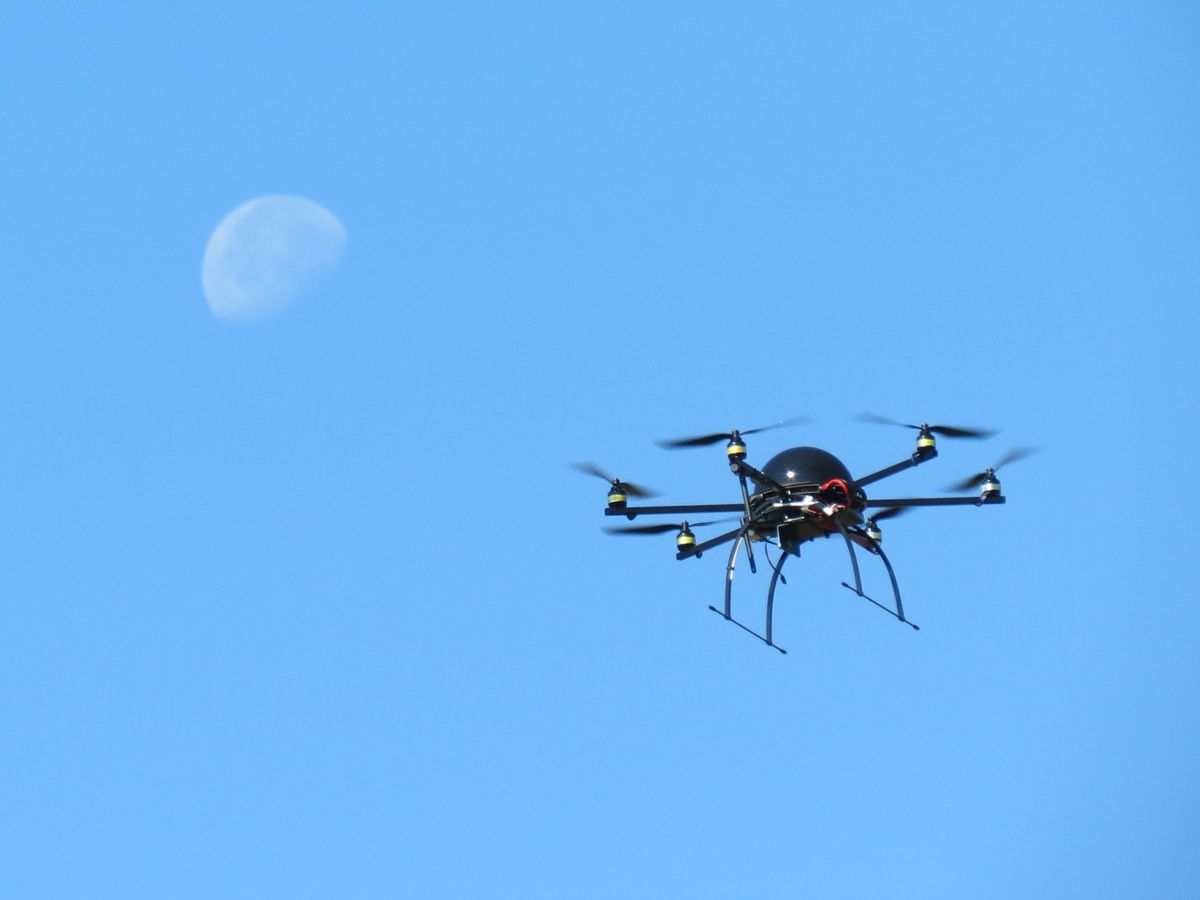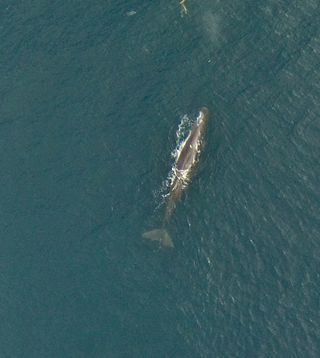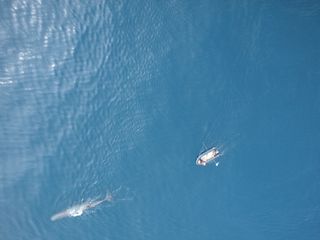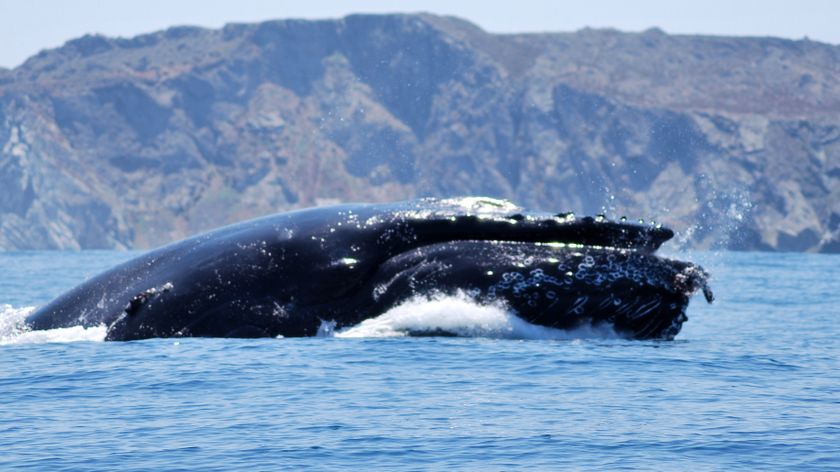
Meet a One-Eyed, Six-Legged, Flying Whale Chaser

Low, slow and loud — counting marine life by plane has some drawbacks. Though scientists can cover wide swaths of ocean, engine noise may disturb animals and the surveys always present some risk to pilots and crew.
So some biologists are turning to less obtrusive unmanned aerial vehicles (UAVs) to spot species including whales, dolphins, sea lions and penguins. From small helicopters to planes with a 10-foot (3 meters) wingspan, the battery-powered craft could become a popular new tool.
"What makes these things so effective is they capture a tremendous amount of information," said NOAA marine biologist Wayne Perryman, based at the Southwest Fisheries Science Center in La Jolla, Calif.
For years, Perryman has experimented with military reconnaissance techniques to track marine life. He collaborates with former Navy officer Don LeRoi of Aerial Imaging Solutions in Connecticut.
Their latest device is a hexacopter. With six quiet motors, internal gyroscopes, an accelerometer and a GPS, the mechanical bird has great maneuverability, Perryman said. For the past two years, Perryman has snapped shots of penguin and seal colonies in Antarctica with the hexacopter. Future trips include a jaunt to Alaska to survey stellar sea lions.
"When you get into aggregations of thousands of animals, humans are lousy at determining how many animals there are," Perryman told OurAmazingPlanet. "With photography, you can go back in time and see something you maybe wouldn't have noticed," he adds.
Sperm whale spotting
Sign up for the Live Science daily newsletter now
Get the world’s most fascinating discoveries delivered straight to your inbox.
In February and March, Perryman and LeRoi helped an international science team track sperm whales near New Zealand by capturing whale photos with the copter. The scientists attached tracking tags to the whales, and knowing their size and shape from the photos improves understanding of how the whales dive underwater, Perryman said. It was the first ship-based test for the 'copter, named Archie by the scientists onboard.

There were lessons learned. Even with a gyroscope-stabilized platform brought on ship to calibrate the hexacopter's stabilizing systems, Archie ended up in the ocean on one flight. "We picked it up and rinsed it off with fresh water, and within a week, we were flying again," Perryman said.
For their ease-of-use and cool aerial photos and videos, hexacopters are also popular with hobbyists, who can build a bird with off-the-shelf parts for less than $1,000.
Perryman said it would cost $60,000 to design a hexacopter for marine research, and he hopes to find funding for a pilot trainer.
"We need to build a tough little aircraft that has all the same components as our sampling bird, but one you can crash and knock it into things and fly into trees and it keeps on ticking," he said.
Abandon ships?
Researchers at Murdoch University in Australia are also testing a small fixed-wing plane to survey and count marine life, including dugongs, an animal similar to manatees, and humpback whales. [Whales: Giants of the Deep]

Perryman sees potential for using aerial devices to place tracking tags on animals, collect skin specimens and sample breath, which contains information about an animal's health. Currently, scientists invest many hours following whales and other species to collect this information and place tags, typically in small rubber boats.
The photographic detail achievable with these vehicles could also help differentiate between species, Perryman said.
"In the Antarctic, there may be four undescribed species of killer whales. If you're going to ask questions about size and shape and growth, you have to have a way of collecting very accurate information without handling the animals, and that's what this can do," Perryman said.
Editor's note: This article was updated March 25 to correct that hexacopters have motors, not engines.
Email Becky Oskin or follow her @beckyoskin. Follow us @OAPlanet, Facebook or Google +. Original article on LiveScience's OurAmazingPlanet.












